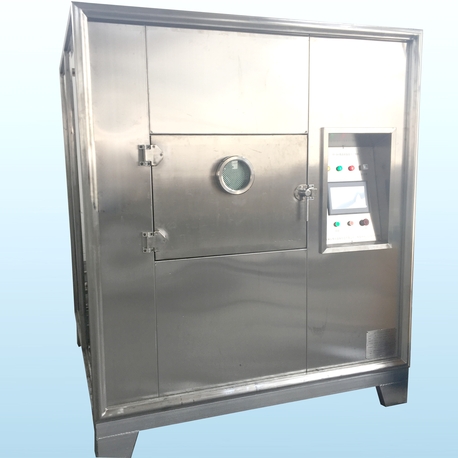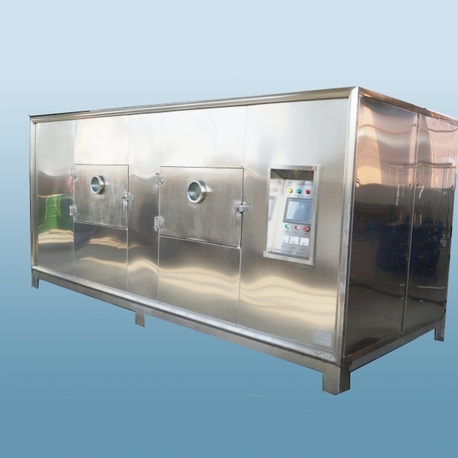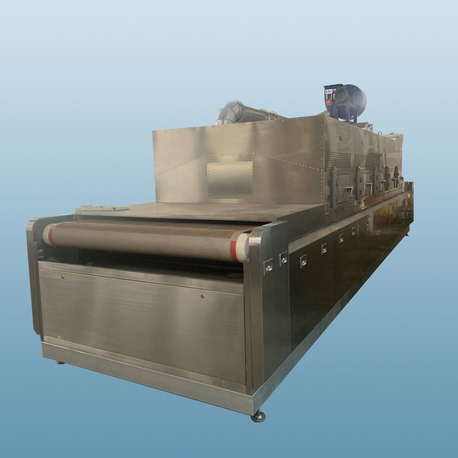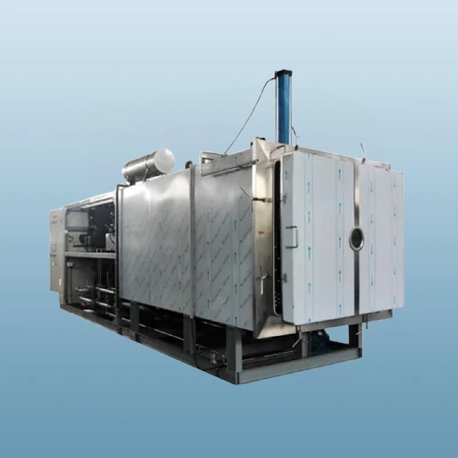In the world of food processing and preservation, efficiency and quality are paramount. Whether you're in the agricultural sector, food manufacturing, or running a large-scale commercial kitchen, having the right equipment can make all the difference. One such essential piece of machinery is the vegetable dryer, a device designed to remove moisture from vegetables efficiently, extending shelf life and maintaining nutritional value. With various options available, selecting the best vegetable dryer can be daunting. In this article, we'll dive into seven crucial factors to guide your decision, ensuring you invest in a system that meets your industrial needs. We'll also touch on reliable brands like Nasan, known for their innovative drying solutions, to give you a head start.
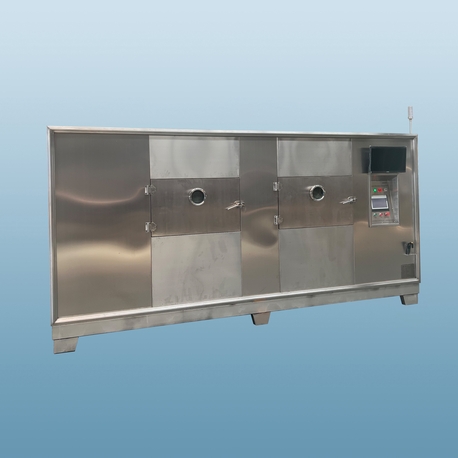
Understanding the Basics: What Is a Vegetable Dryer?
A vegetable dryer is an industrial machine used to dehydrate vegetables by controlling temperature, airflow, and humidity. This process helps preserve vegetables by reducing water content, which inhibits microbial growth and spoilage. In commercial settings, vegetable dryers range from small batch units to large continuous systems, catering to industries like snack production, herbal medicine, and ready-to-eat meals. The core principle involves circulating hot air or using advanced technologies like heat pumps to evaporate moisture without compromising the vegetables' texture, color, or nutrients. For businesses, this translates to reduced waste, lower transportation costs, and enhanced product versatility. When exploring options, it's wise to consider established providers such as Nasan, which offer robust vegetable dryer models tailored to diverse applications.
Why Your Business Needs an Industrial Vegetable Dryer
Investing in an industrial vegetable dryer isn't just about preservation—it's a strategic move to boost profitability and sustainability. In food processing, dehydration allows for year-round availability of seasonal vegetables, supporting supply chain stability. Moreover, dried vegetables are lighter and easier to store, making them ideal for export or bulk packaging. From a quality perspective, a well-designed vegetable dryer ensures consistent results, whether you're producing kale chips, dried tomatoes, or powdered vegetable mixes. This consistency is crucial for meeting industry standards and customer expectations. Brands like Nasan have engineered vegetable dryers that integrate energy-efficient features, helping businesses cut operational costs while maintaining high output. By incorporating a vegetable dryer into your operations, you can also reduce environmental impact through minimized food waste and optimized resource use.
Key Technologies and Processes in Vegetable Drying
The technology behind vegetable dryers has evolved significantly, offering various methods to suit different needs. Common types include tray dryers, belt dryers, and fluidized bed dryers, each with unique advantages. For instance, tray dryers are ideal for small batches and delicate vegetables, while belt dryers provide continuous processing for high-volume operations. Advanced systems often incorporate heat pump technology, which recycles heat to improve energy efficiency by up to 50%. Another innovation is the use of controlled airflow and humidity sensors, which prevent over-drying and preserve vital nutrients. When evaluating a vegetable dryer, it's essential to assess the drying kinetics—how heat and mass transfer affect the final product. This technical depth ensures that your chosen vegetable dryer delivers optimal moisture removal without sacrificing quality. Companies like Nasan leverage these technologies to create vegetable dryers that are both reliable and adaptable to various vegetable types, from leafy greens to root vegetables.
How to Select the Right Vegetable Dryer for Your Application
Choosing the perfect vegetable dryer involves several considerations to match your specific requirements. First, assess your production capacity—whether you need a machine for small-scale artisanal use or large industrial output. Next, consider the types of vegetables you'll be drying, as moisture content and structure vary; for example, a vegetable dryer designed for herbs might differ from one for potatoes. Energy efficiency is another critical factor; look for models with high thermal efficiency and low electricity consumption to reduce long-term costs. Additionally, evaluate the control systems: user-friendly interfaces and automation can streamline operations and minimize human error. Don't forget maintenance needs; a vegetable dryer with easy-to-clean components and durable parts will save time and money. In this regard, brands such as Nasan offer customizable vegetable dryer solutions, allowing you to tailor features like temperature ranges and drying cycles to your exact needs.
Cost and Pricing Considerations for Vegetable Dryers
When budgeting for a vegetable dryer, it's important to look beyond the initial purchase price and consider total cost of ownership. Industrial vegetable dryers can range from a few thousand to over $100,000, depending on size, technology, and features. Key cost drivers include energy consumption, maintenance, and potential upgrades. For instance, a heat pump-based vegetable dryer might have a higher upfront cost but lower operating expenses due to energy savings. Conversely, simpler models may be cheaper initially but lead to higher utility bills. To make an informed decision, calculate the return on investment by estimating savings from reduced waste and increased production efficiency. It's also wise to compare quotes from multiple suppliers and inquire about warranties and after-sales support. Nasan, for example, provides transparent pricing for their vegetable dryers, along with service packages that help manage long-term costs effectively.
Finding Reliable Suppliers and Commercial Services
Sourcing a vegetable dryer from a reputable supplier ensures quality and reliability. Start by researching manufacturers with a proven track record in industrial equipment—look for certifications like ISO standards and customer reviews. Trade shows and industry expos are great places to see vegetable dryers in action and discuss options with experts. When evaluating suppliers, ask about their after-sales services, such as installation support, training, and spare parts availability. A good supplier will offer comprehensive service agreements to minimize downtime. Additionally, consider companies that provide custom engineering services if your operations have unique requirements. Nasan stands out in this area, offering end-to-end support from consultation to maintenance for their vegetable dryer products. By partnering with a trusted provider, you can ensure that your vegetable dryer integrates seamlessly into your workflow and delivers consistent performance.
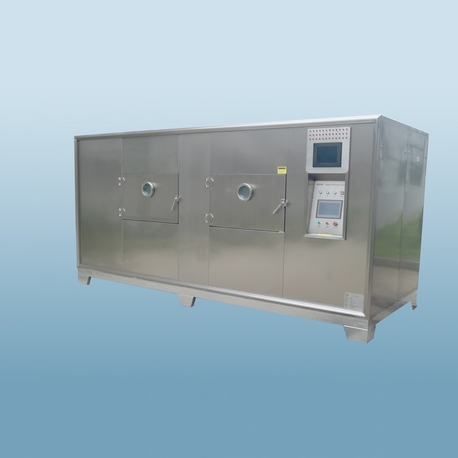
Conclusion: Making an Informed Decision on Vegetable Dryers
In summary, selecting the right industrial vegetable dryer involves a balance of technology, cost, and supplier reliability. By focusing on factors like capacity, energy efficiency, and application-specific needs, you can find a machine that enhances your business's productivity and sustainability. Remember, a high-quality vegetable dryer not only preserves vegetables but also opens up new market opportunities. As you explore options, keep an eye on innovative brands like Nasan, which continue to push the boundaries in drying technology. Whether you're upgrading an existing system or investing for the first time, this guide should help you navigate the process confidently. Ultimately, a well-chosen vegetable dryer is an investment in your company's future, driving growth and efficiency in a competitive industry.
Frequently Asked Questions (FAQs) About Vegetable Dryers
Q1: What is the typical lifespan of an industrial vegetable dryer?
A1: The lifespan of an industrial vegetable dryer varies based on usage, maintenance, and build quality. On average, a well-maintained vegetable dryer can last 10 to 15 years. Regular cleaning, timely part replacements, and following manufacturer guidelines—such as those from brands like Nasan—can extend its longevity. Factors like operating hours and environmental conditions also play a role, so it's advisable to invest in durable models designed for heavy-duty use.
Q2: How does a vegetable dryer compare to traditional sun-drying methods?
A2: A vegetable dryer offers several advantages over traditional sun-drying, including faster processing, consistent results, and better hygiene. While sun-drying is low-cost, it's weather-dependent and prone to contamination. In contrast, an industrial vegetable dryer provides controlled conditions that preserve nutrients and reduce spoilage risks. This makes it ideal for commercial applications where quality and efficiency are critical.
Q3: What maintenance is required for a vegetable dryer?
A3: Regular maintenance for a vegetable dryer includes cleaning air filters, inspecting heating elements, and checking for wear on belts or trays. It's recommended to perform daily visual checks and schedule professional servicing every 6-12 months. Proper maintenance ensures optimal performance and prevents breakdowns. Suppliers like Nasan often provide maintenance kits and support to help users keep their vegetable dryer in top condition.
Q4: Can a vegetable dryer handle different types of vegetables simultaneously?
A4: Yes, many modern vegetable dryers are designed to handle multiple vegetable types in one batch, but it depends on the model and settings. Factors like drying time and temperature may need adjustment for different moisture contents. It's best to consult the manufacturer's guidelines—for instance, Nasan's vegetable dryers often feature adjustable parameters to accommodate varied loads, though segregating vegetables by type can ensure uniform drying.
Q5: What energy efficiency standards should I look for in a vegetable dryer?
A5: When evaluating energy efficiency in a vegetable dryer, look for features like heat recovery systems, insulated chambers, and programmable controls. Standards such as ENERGY STAR or equivalent certifications can indicate lower energy consumption. Additionally, technologies like heat pumps can reduce electricity use by up to 60%. Brands like Nasan prioritize energy-efficient designs in their vegetable dryers, helping businesses save on operational costs while supporting environmental sustainability.



